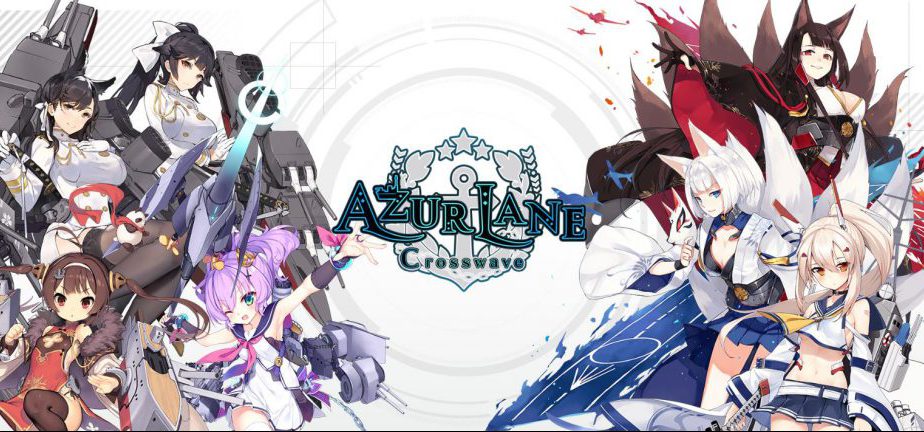Some people like to “ship” their favourite characters. As conventional as that may seem, this game seems to have gotten a little confused along the way. It has made the characters into actual ships. Well doesn’t that put a whole new spin on the term relationSHIPs in Azur Lane: Crosswave!
Type: Single-player
Genre: Action, Adventure, RPG
Developer: IDEA FACTORY,
COMPILE HEART,
FELISTELLA
Publisher: Idea Factory
Franchise: Azur Lane
Release Date: 13 Feb, 2020


Reviewer’s Note
Idea Factory, the home of the Pudding Loving Neptune, the protagonist of the Neptunia series has taken some pretty odd turns here and there. Neptune has found herself hopping dimensions a few times and even hopping genres so none of the shenanigans that the Goddess of Planeptune gets herself into really surprises me anymore. She has fallen from the sky and crashed into the ground so often that Gamindustri is probably full of Neptune shaped craters. This time though she fell into something a little wetter by landing in the ocean. Also, although she might not even realize it, she is now a ship herself, a Light Cruiser and she is not in fact the Protagonist but doesn’t tell her that. During the first month, Neptune is a free DLC and comes in handy early on until you unlock other ships. She doesn’t really do much story-wise because the game isn’t about her, but it was still nice to see Neptune again.
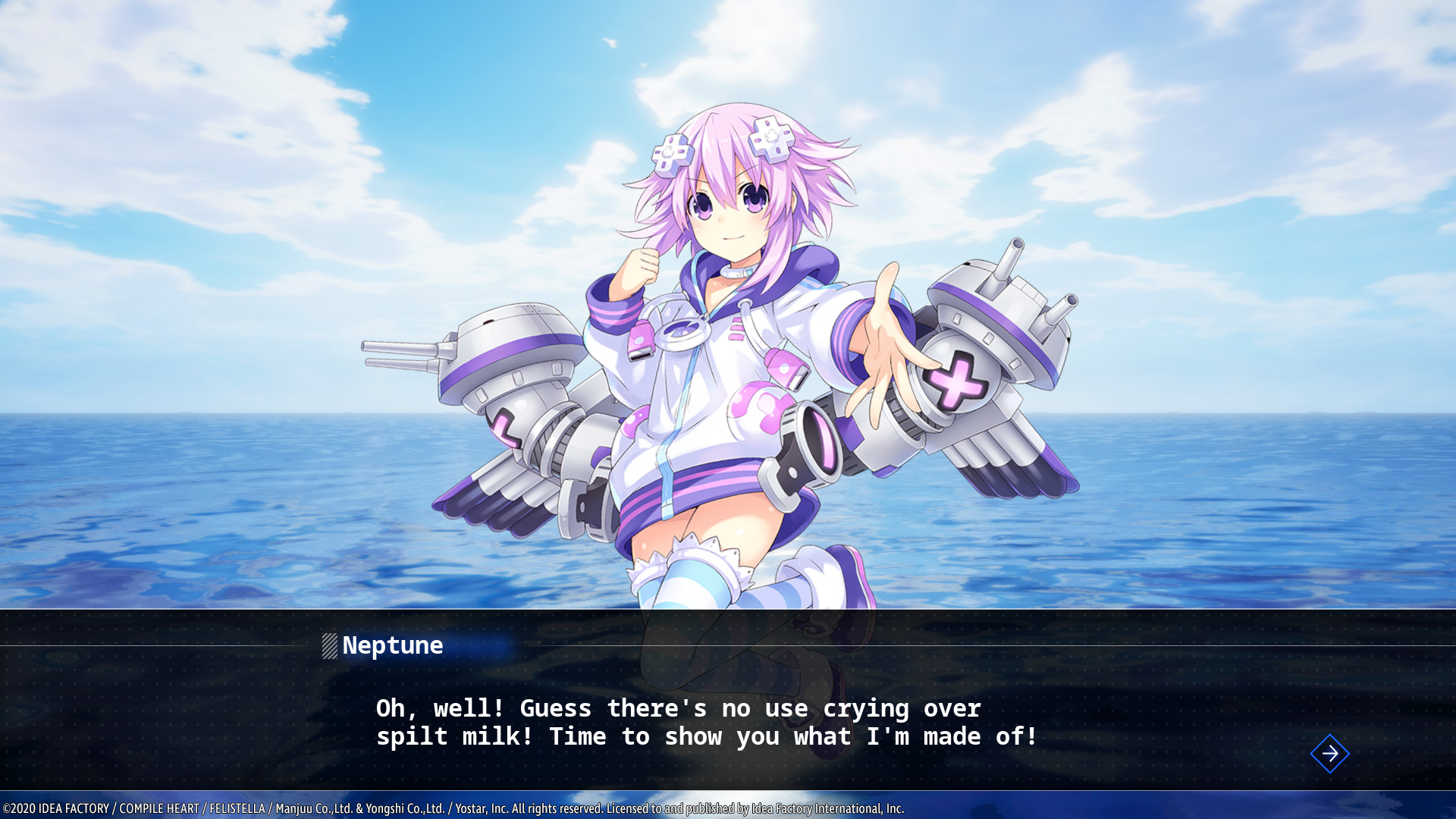
Review
The first thing I noticed when I started playing Azur Lane: Crosswave is that the characters are in fact personified warships. They also have the ability to travel on land and sleep in beds, but they tend to do most of their battling out at sea. I can tell you that while this is an interesting concept it feels like I kind of strayed into the weirder side of the JRPG genre again. I usually still enjoy myself when I stumble too far off the traditionally beaten path though so I don’t mind venturing into uncharted waters every now and then. The second thing I noticed is that warships tend to be named after real-life warships. There are even some humorous elements that anyone familiar with naval history will likely notice and be amused by. For example, Bismarck is a bit uneasy around Hood and the Royal Navy in general and tries to avoid them. The game explains why this is and it stems back to an earlier match they had … but in the real world during the second world war, the HMS Hood along with HMS Prince of Wales was sent to sink the Bismarck and the Prinz Eugen. This led to the sinking of the HMS Hood but also spurred the relentless pursuit of the Bismarck by the Royal Navy and the ultimate sinking of the Bismarck. It also led to the later day creation of a rousing song telling the story of the pursuit… so; Bismarck being uneasy around Hood is likely a nod to this historical event.
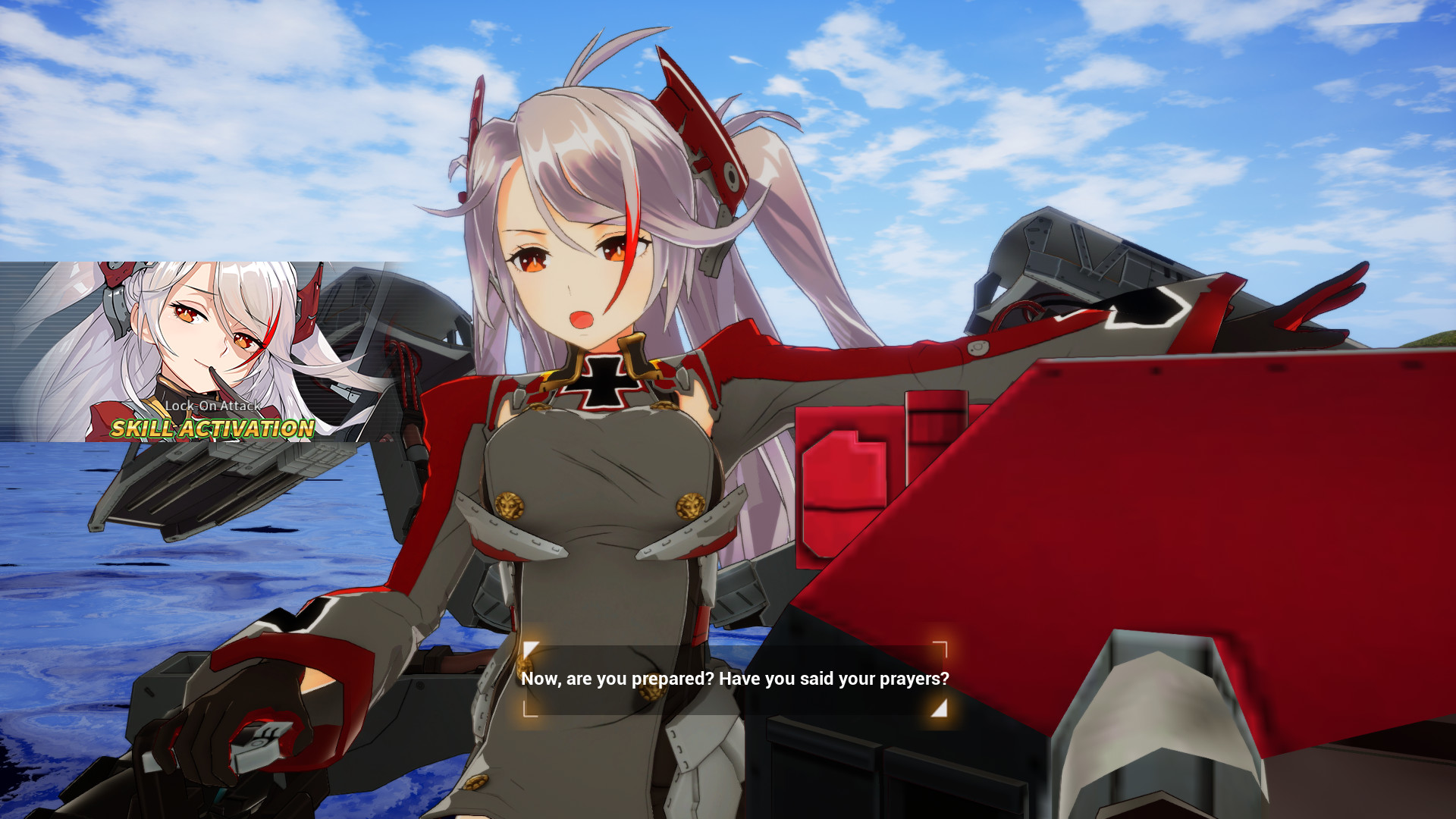
Gameplay
The gameplay of Azur Lane: Crosswave is your typical fashion for an Idea Factory game. It’s primarily a Visual Novel that has other gameplay elements to it. For war machines they are surprisingly friendly and like to talk a fair amount. They are not actually at war though; they are simply playing war games. Each of the major powers has sent some of their finest ships to the games. There is an enemy about that is creating a bit of havoc but it’s mostly a coordinated cube collection exercise with some slightly spurious logic to it.
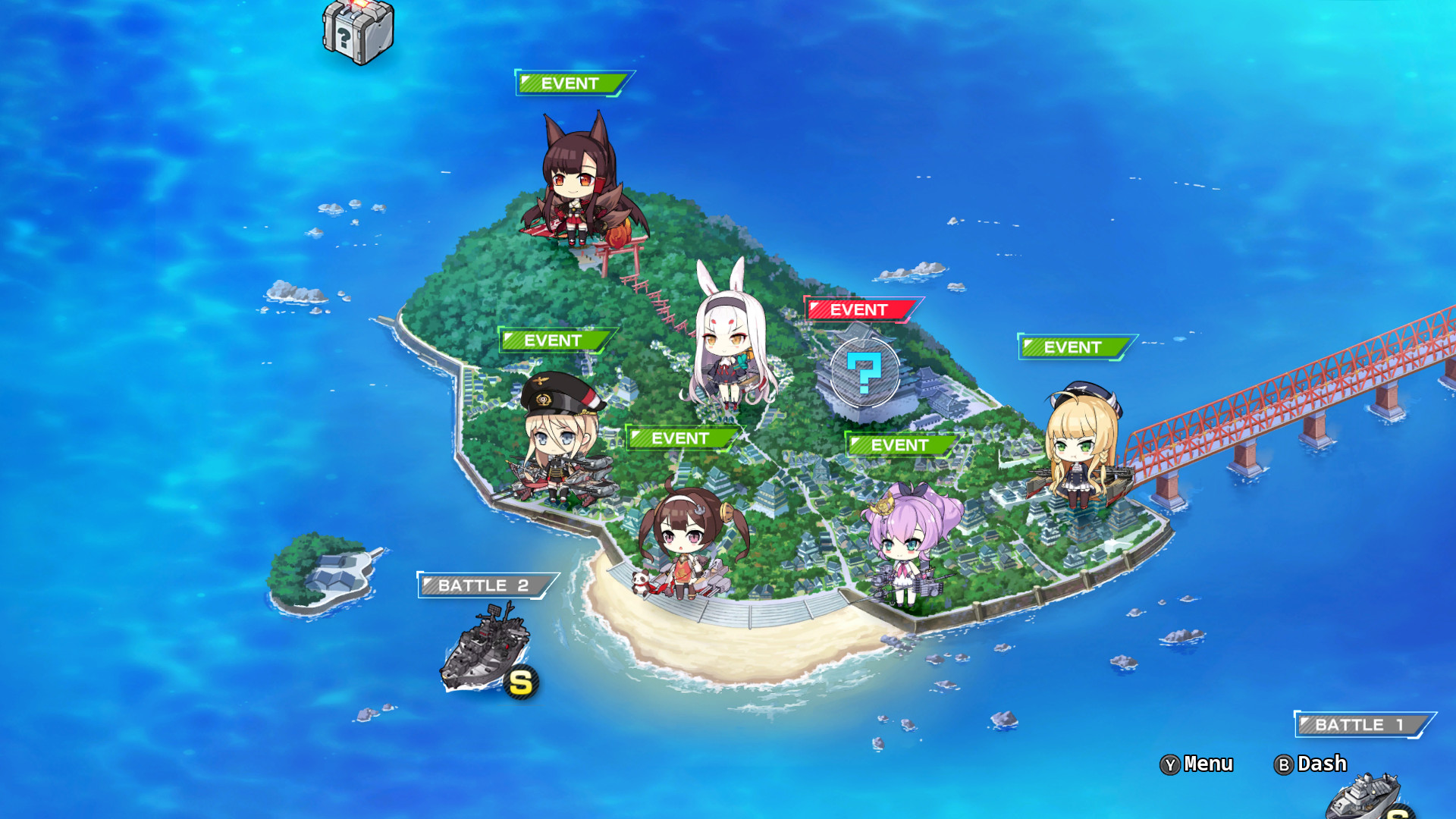
The non-combative gameplay has you controlling a character that can move about the map freely. Scattered around the map are silver and golden treasures that can be collected as well as events you can witness. Green and Red events might simply be dialogue between ships or could be a call to battle. The map makes it clear what it will be so that if you are just trying to get through the story elements before advancing you can easily pick off the non-mission critical events first and the non-mission critical battles too. You also have the ability to redo any battles in the current chapter in order to get more rewards. The story isn’t really an active element, you the viewer, just sit back and read the story as it unfolds. One thing to note though is that after a battle, even if it isn’t a mission required one, the research lab may have a special item for you to buy. The game lets you know that it is available so you can quickly go visit the store and purchase it if you want. Usually this item is a little better than your current gear, but can be a bit expensive especially early on. You might be better off upgrading your current armaments rather than purchasing the new one especially if you like your current one.
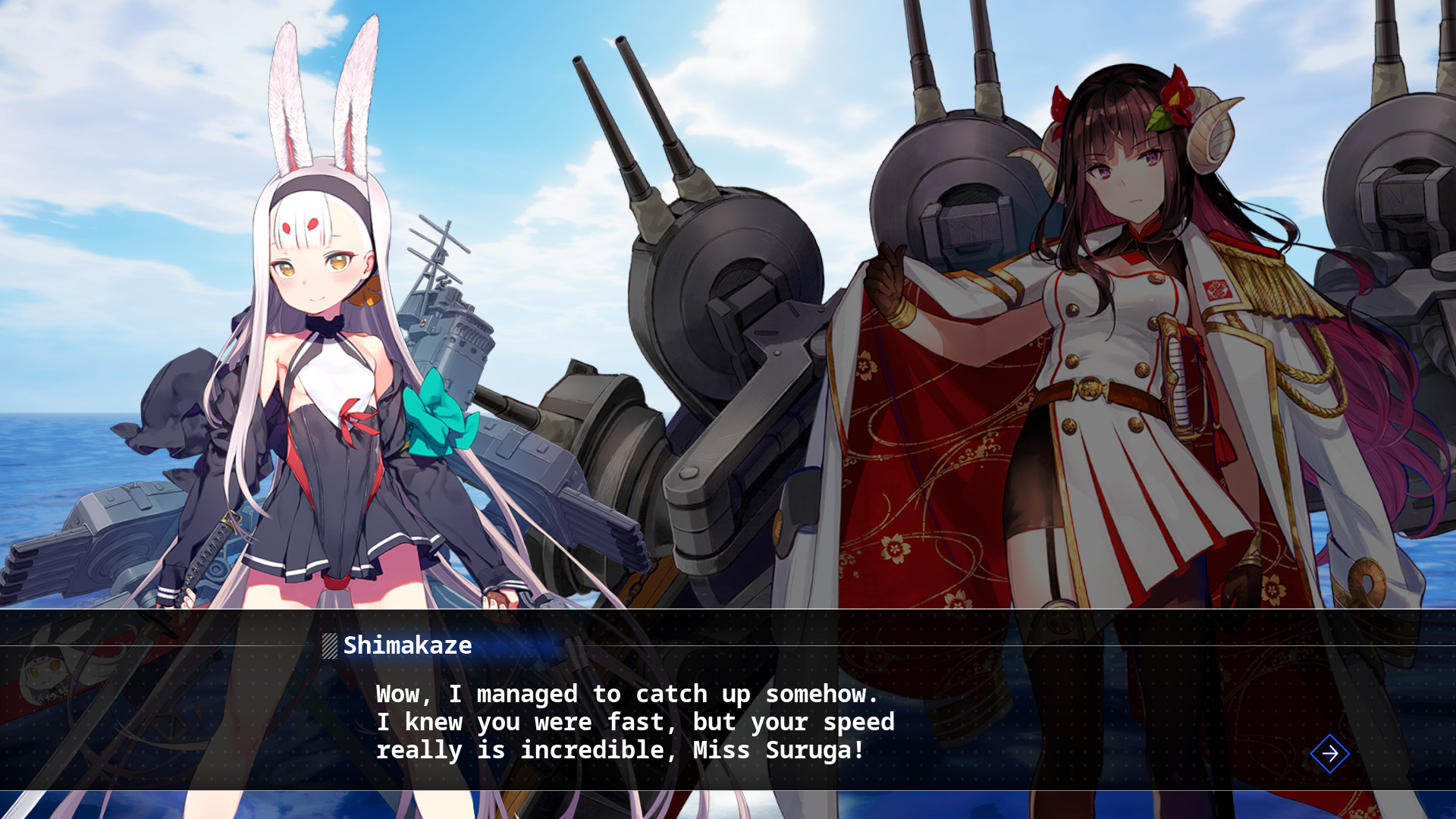
When outside of the dialogue options and the episode story side features, there is the actual combative gameplay element to contend with. This is an interesting albeit a bit overwhelming experience due to the number and classes of ships at your disposal as well as all the various riggings (armaments) you can equip them with. There are positives and negatives to each class in general which gets even more complicated by the fact that even ships of the same class may have different types of armaments available to equip to them. Ultimately, I tried every ship I had available to me and created a fleet that seemed to work well for me and stuck with it and focused on upgrading their riggings first before upgrading any of the other ships in my fleet. There are also support ships that don’t exactly engage in battle but offer some kind of boost or bonus to your main fleet.
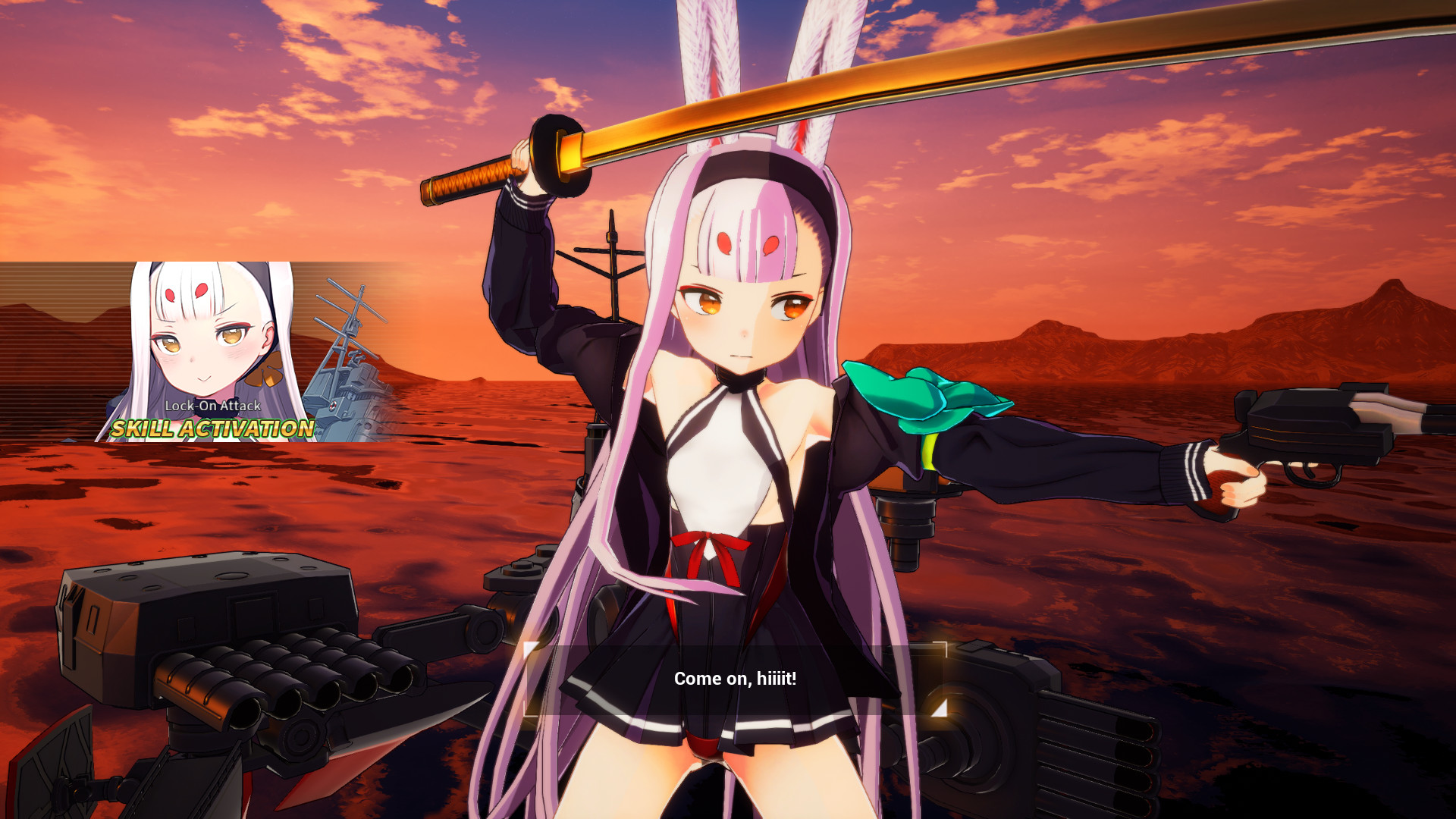
Combat
Getting a little more into combat seems appropriate right now. When you are getting ready to deploy, you are able to select up to six ships to go into battle. Three of them are your combat ships and the other three are the support ships I mentioned. Once you have figured out what you want to take with you, you are dropped into the ocean screen where your ships speed up to the combat area. Then the foes appear. It will either be normal looking ships or other humanized ships. The regular ships are pretty easy to sink regardless of their class and the enemy airplanes, while they can hurt quite a bit and are a bit of a pain to manually target, can easily be taken out by your auto-targeting anti-air weapons if you have them equipped. The enemy personified ships tend to move more quickly and have more dangerous firepower so that is where the real combat fun comes into play. If you are not careful any of the enemy ships can sink you on the harder difficulties but it is more likely that the humanized ships will get you.
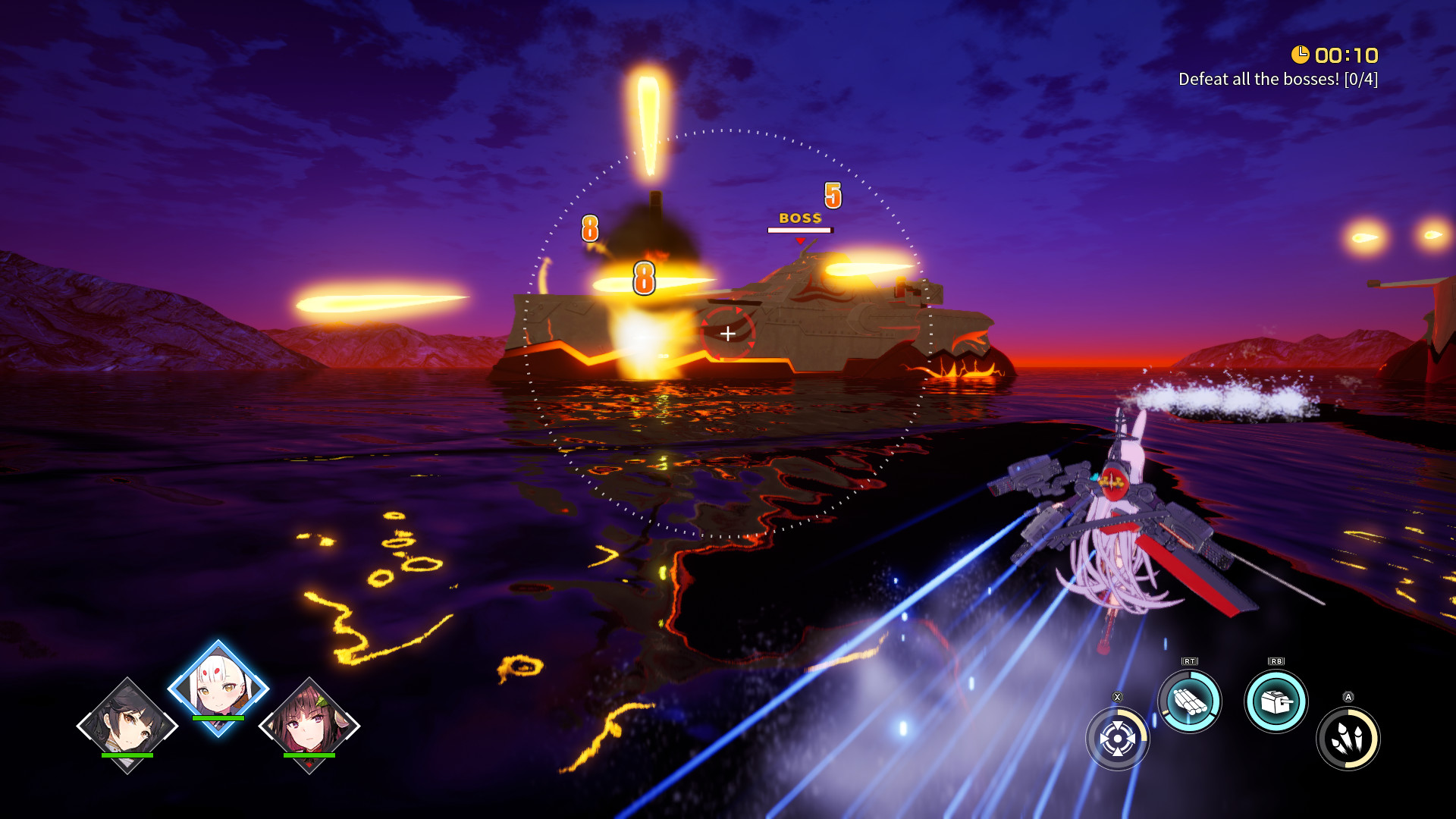
You have a number of different armaments at your disposal. Many of them feel similar and that makes sense when they are just variations on the same type, but there are also completely separate ones as well. The standard guns shoot their ammunition at various rates; the torpedoes fire in a spread that may or may not home in on their target, aircraft can take off in waves and pester the enemies. The type of ship mostly defines what kinds of armaments they can be outfitted with as well as their general strengths and weaknesses in combat. The interplay of riggings and ships comes into play more on the higher difficulty settings. The lowest difficulty setting can basically have the lightest ship with the weakest gun manage to survive a heated battle where they were outnumbered and outgunned just by sitting still and spamming the fire button. The highest difficulty on the other hand can have a mighty battleship sunk by being outmanoeuvred by a lighter ship that its deck guns could have otherwise torn apart easily.
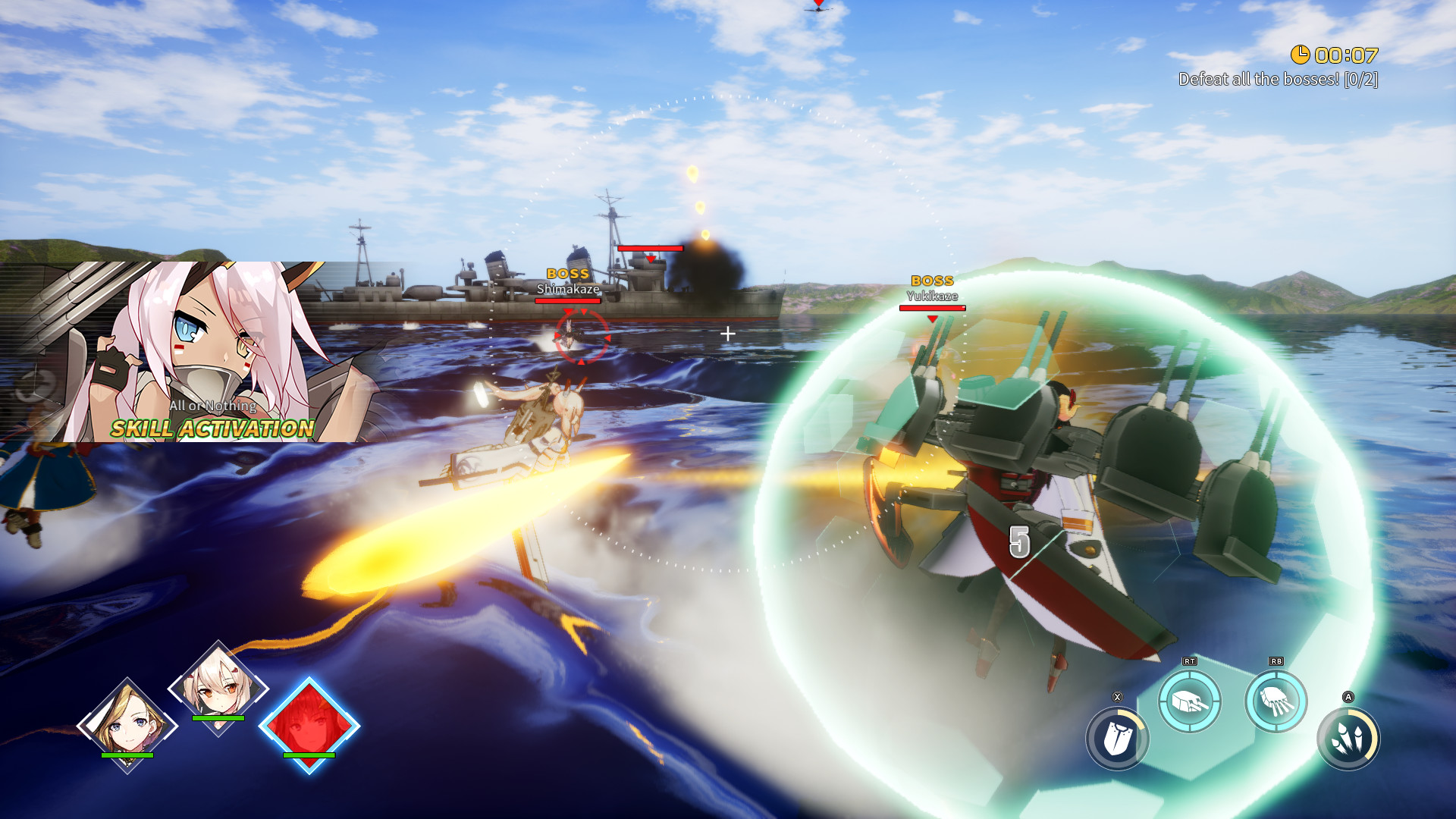
There are also modifications that can be added to the armaments that can increase their effectiveness. More accurate, more powerful, faster reloading or otherwise enhanced…this can be done through either extra equipment or by upgrading the level of the existing equipment. I often found my older weaker weapons being more powerful than my newer weapons simply because I had upgraded them a number of times. You can definitely be overwhelmed easily when attempting to deal with all the rigging options for your ships.
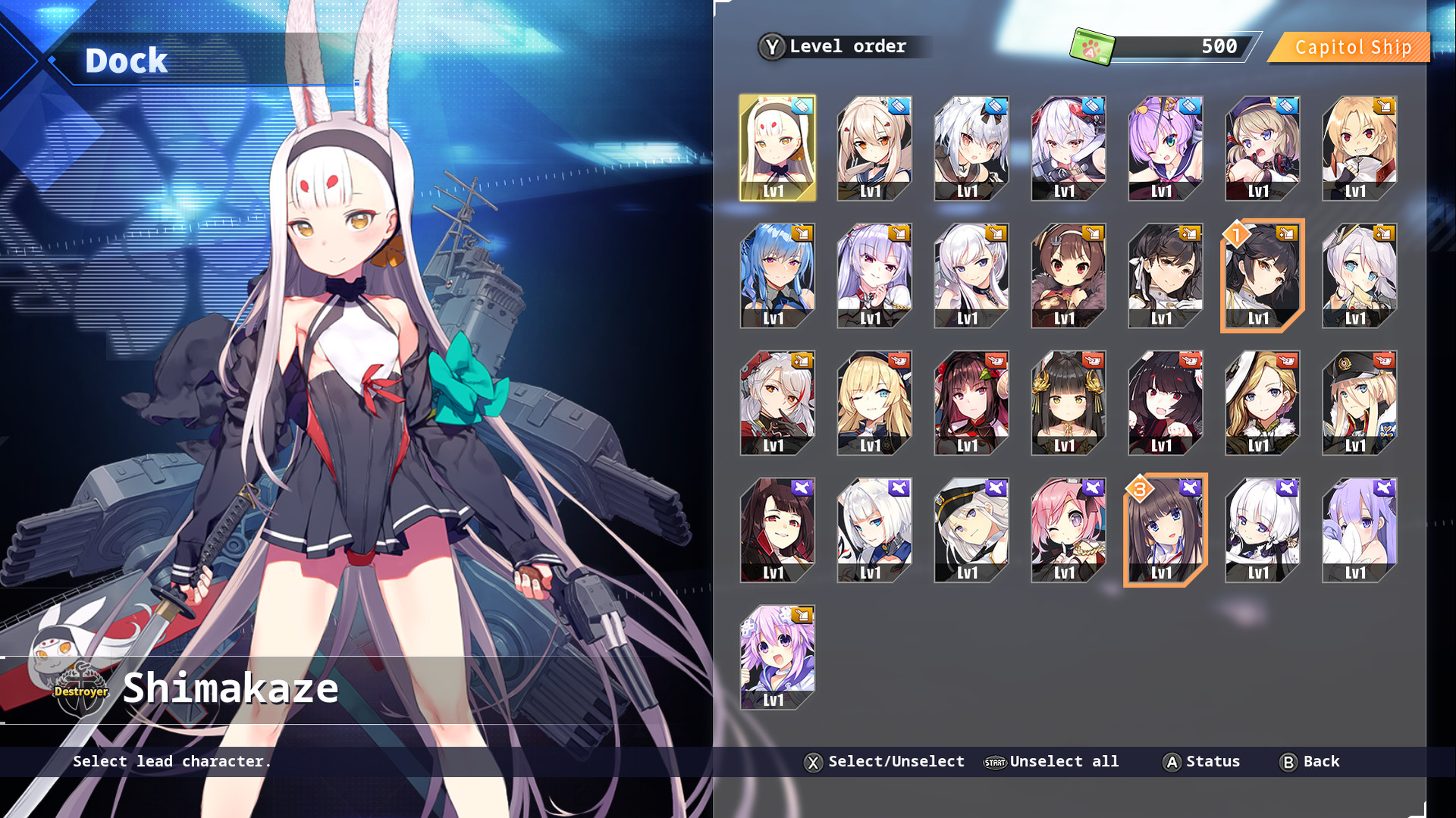
Story and Characters
I’m not going to spoil anything, but I would like to talk about the story. Each ship has her own unique personality. They cover most of the standard JRPG tropes so odds are you will likely end up like one of the ships more than the others. The story is delivered in a chapter format with little events occurring to deal with in each chapter. As mentioned, there are purely dialogue events where you get to either listen in on a conversation or a more involved longer exchange where the story actually gets progressed. The side story events don’t really add that much to the overall story but they do help flesh out the characters which are always important in a Visual Novel. The combat events usually have a short intro and outro dialogue that has a minor impact on the story progression. The overarching story itself is interesting enough to hold your attention but I never found myself really pulled in to it like some of the other Idea Factory titles. It starts out with exercises that turned into a firefight with an enemy called the Sirens. This led to mysterious cubes leaking into the ocean from one of the damaged ships. Since there were so many of them, one empire enlisted the aid of the other major empires under the pretence that it was just a friendly game and not the fact that they were trying to horde the cubes for themselves. The story progresses through a few of these event games and slowly unfolds the plot. Overall it is still an interesting story even if it wasn’t a really engaging one.

Graphics
The graphics look good for a Visual Novel. It has your standard 2D characters overlaid on a backdrop style story progression. The backdrops utilized help show where the characters currently are. This overall effect has been a staple of Visual Novels for a very long time and continues to work well here. When out in combat you are treated to a more 3D model of your characters. Each 3D model, much like its 2D counterpart, is highly detailed and you can actually see their riggings kind of floating beside them. When in their 2D form, their riggings actually look far more detailed in my opinion but that is likely due to the fact it is easier to detail the 2D character that doesn’t really move in comparison to an animated 3D character. In reality, if I saw someone walking up to me with a couple of aircraft buzzing by their head and a rather long aircraft carrier looking accent floating near them, or otherwise had a couple of warships looming next to each shoulder, I would probably check to see if my beverage had been spiked and quickly move away from them. I also question what happens to these riggings if they try to lie down to go to sleep and if they roll over in their sleep. Do those little ships have a crew on them? Do they even need to look like ships because the character and the ships tend to just fly over the top of the water, unlike the real/regular ships that are in the game? It’s the weird part of the JRPG genre like I mentioned before and these kinds of questions never really do get answered.
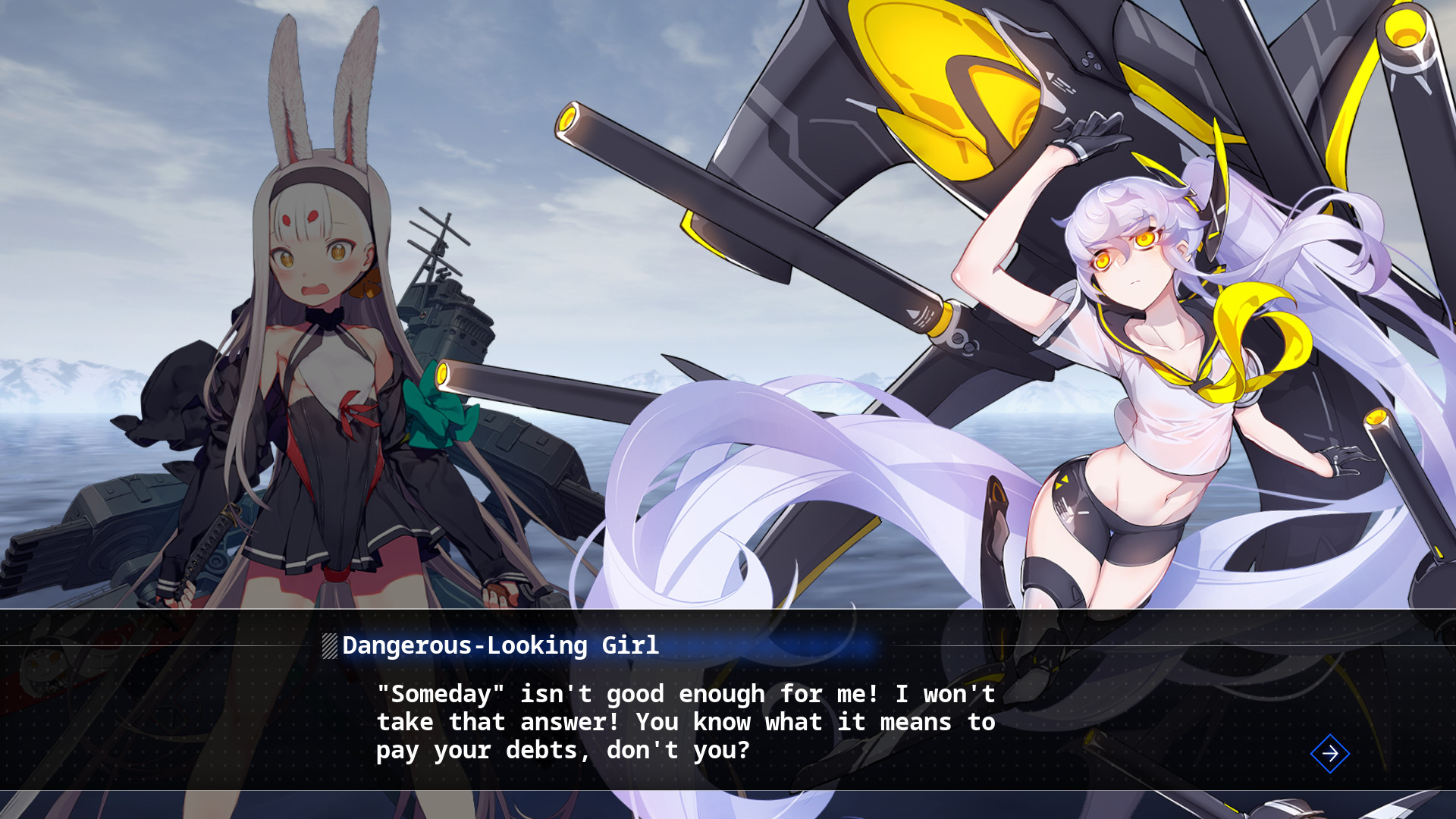
Audio
This game is fully voiced in Japanese. Each character sounds like they would be fun to understand. Almost everything is voice acted which is always a plus. The sound effects in the game are pretty standard but work well but take a backstage to the performance of the characters. There is even some music to help keep you in the moment of battle or to set the tone of the dialogue but to be honest, and I realize this is likely entirely on me, I actually had to go double-check to see if the game actually had background music because for some reason I just mentally tuned it out while playing. It was quite enjoyable though, so not sure why my mind would choose to ignore it.
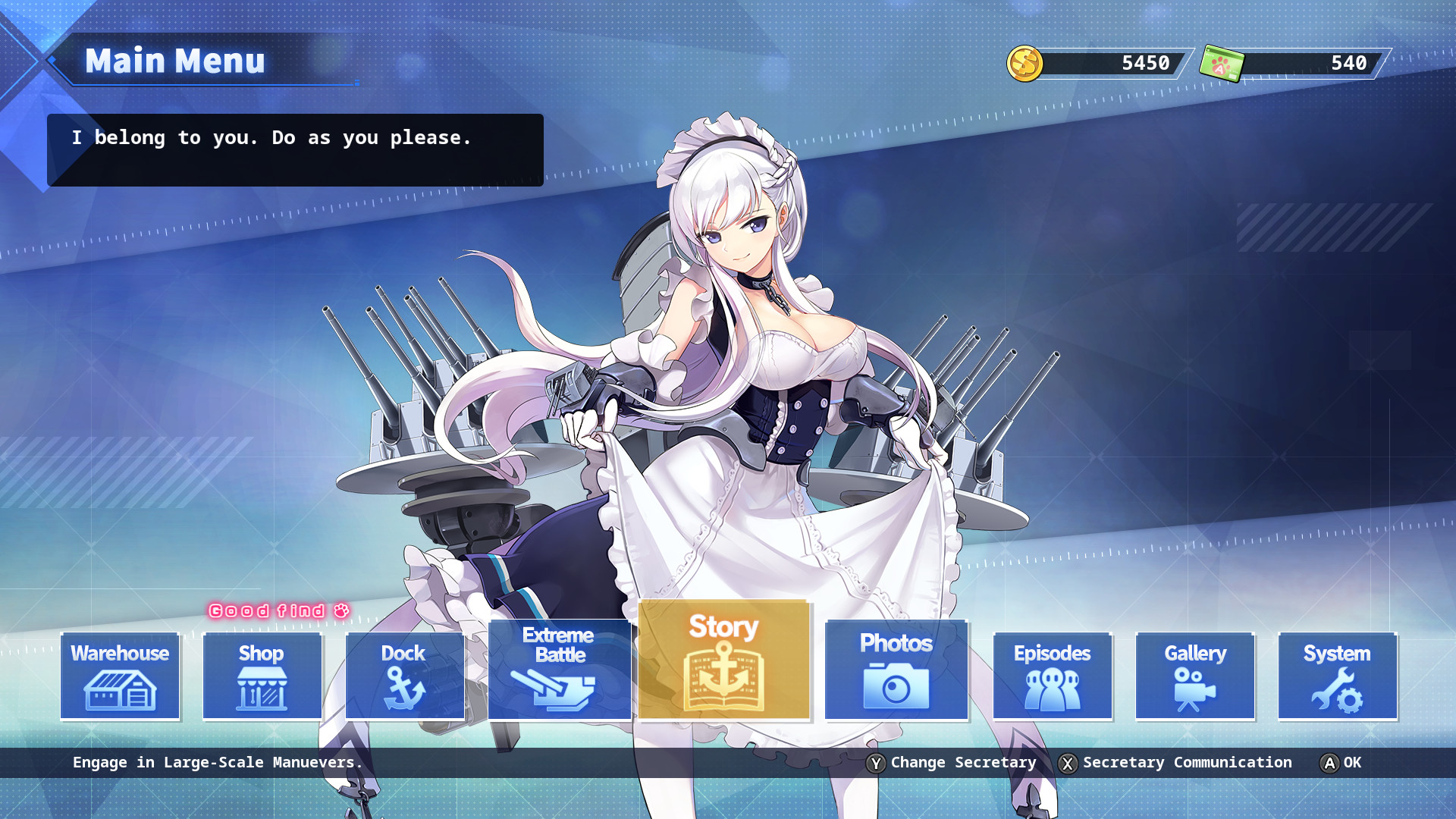
Controls and User Interface
Everything in this game is easy to navigate. The controls are very simple and it even tells you which buttons you need to push to do what. The gauges that show the availability of your weapons makes it very clear when they are ready to fire and when they are still reloading and even how long until you can use them again. The menu system is easy to navigate and it even has a few bonus perks to it. For example, when you are upgrading the rigging on a ship it will show white parts and green parts. The white parts are available right now while the green parts are currently equipped on another ship. You can easily transfer the riggings and it even tells you whose riggings you just stole so you can go equip something else on them. You have the ability to revisit previous battles so long as you have not progressed to a new chapter. This allows you to collect more rewards in order to further upgrade your ships both in terms of levels and the gear they possess.
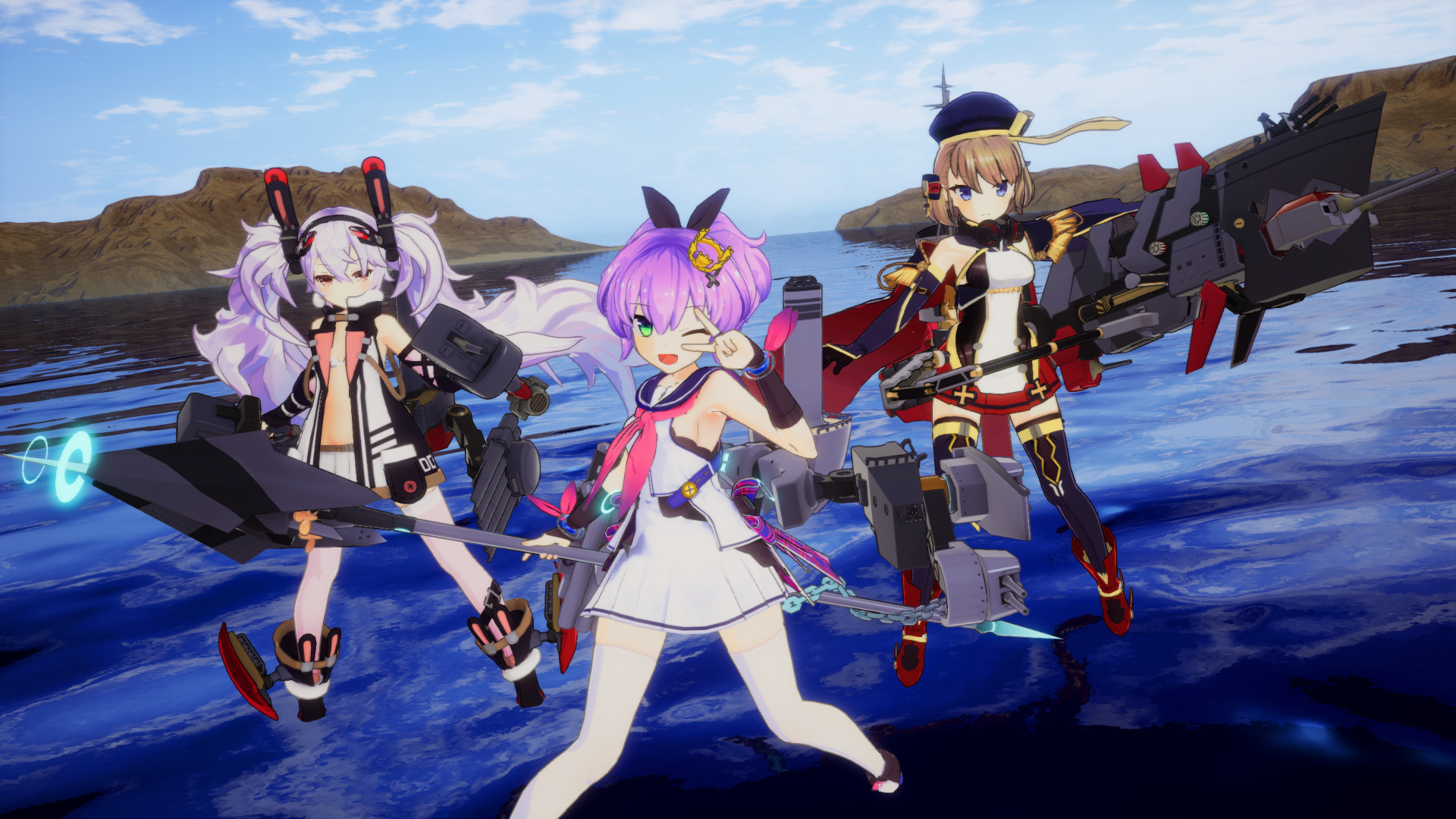
Verdict
So, should you set a course to pick up Azur Lane: Crosswave? If you are fan of Visual Novels that have more to them than just reading, then Azur Lane: Crosswave is one that you will most likely enjoy. It doesn’t go into heavy gameplay mechanics, but has enough complexity to it that it is fun to play. It isn’t just a basic button spammer like some Visual Novel hybrids can have and has a fully fleshed out equipment system to contend with. It doesn’t really have any choice points or consequences to contend with so it isn’t a true Visual Novel but it still has all the elements that make Idea Factory related games fun and interesting to play. It would be a good game for anyone to give a shot to even if they are not that comfortable with complex JRPGs. The only true drawback I can say, and this is a fairly major one and that is the game gets very repetitive. Each chapter feels much like the previous chapter and the combat mostly falls into the exact same routine each time. Regular ships show up, you sink them you move a bit and more show up you sink those too, rinse and repeat. The combat versus the humanized ships offered a challenge unlike the “mass-produced fleets” as they are referred to in-game. Even the story seemed to progress slowly and didn’t really have any hooks to keep you coming back for more. Overall, I’ll have to give Azur Lane: Crosswave a Save for Later. It isn’t going to be one that I will find myself eagerly wanting to replay any time soon, but it was still one I was glad to experience.

